1936 National Air Races
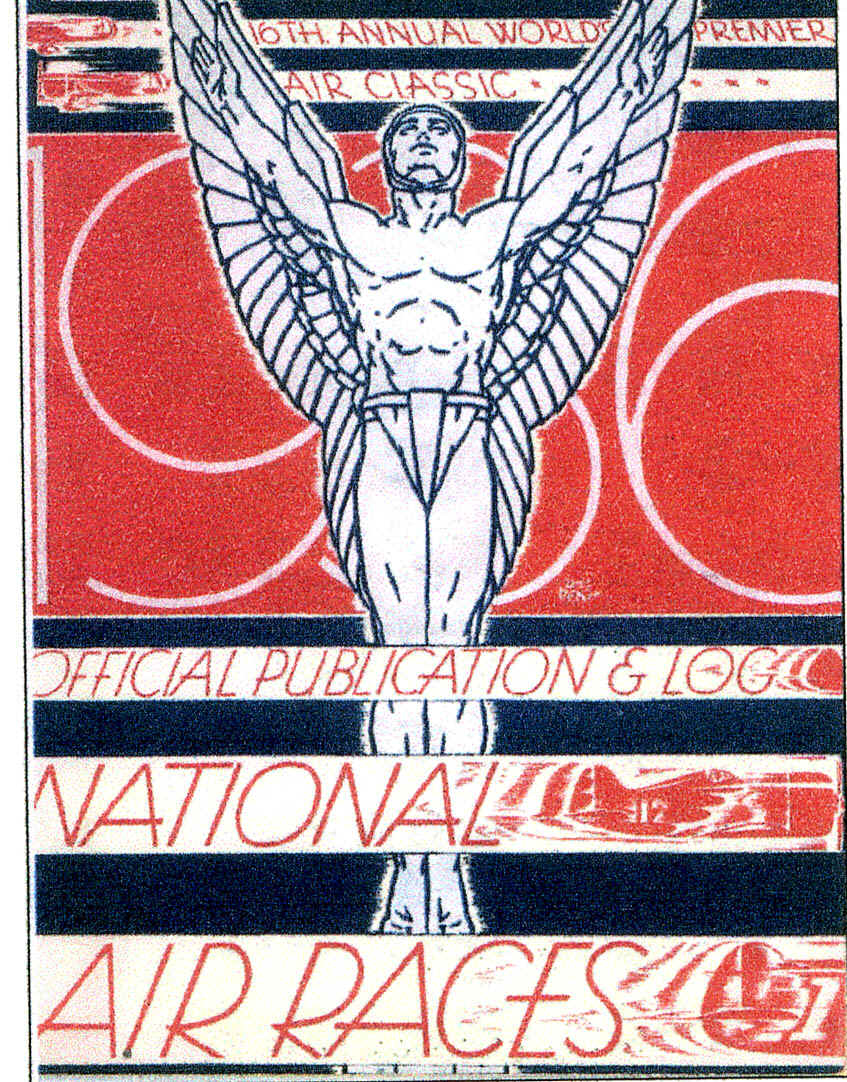
1936 Official Program Cover
(Steve Zatroch collection)
The 1936 Races took several dramatic changes.
The site was moved to Los Angeles Mines Field due to the Cleveland
Airport expansion and the need to move the grandstands back. There
were unexpected events in both the Bendix and the Thompson races.
With the races at Los Angeles the Bendix was started at Floyd Bennett
Field,
New York. The starting line-up included an impressive list of
aircraft-pilot combinations. Benny Howard who won the '35 Bendix
in Mr. Mulligan was
back, this time with wife Maxine as co-pilot.
Joe Jacobson entered
a Northrop Gamma, Lee Miles the QED,
Amelia Earhart her new Lockheed Electra, Louise Thaden and co-pilot
Blanche
Noyes flying a Beechcraft Staggerwing, Laura Ingalls in a
Lockheed Orion, Wm Gulick in a Vultee and George Pomeroy in a
DC-2. As in most races. We all remember who won, but what else do
we remember? some
of the
background may be interesting!
Turner crashed
on the way to New York, Benny & Maxine crashed in
New Mexico, Joe Jacobson was blown out of the Gamma, Lee Miles was
Pomeroy was forth and Earhart and Richey were fifth in the new
Electra.
Paul Mantz who was part of a Hollywood trio of skywriters, would later
compete in the Bendix races.
1936 Logo
Bendix Trophy Race
|
Place |
Pilot |
Race No |
Aircraft |
Time |
|
1 |
Thaden |
62 |
Beech C-17 |
14:55 |
|
2 |
Ingalls |
53 |
Orion 9-D |
15:39 |
|
3 |
Gulick |
33 |
Vultee V1A |
15:45 |
|
4 |
Pomeroy |
B2 |
DC-2 |
16:16 |
|
5 |
Earhart |
20 |
Electra |
16:34 |
|
DNF |
Howard |
40 |
Mr Mulligan |
1 |
|
DNF |
Jacobson |
73 |
Gamma 2A |
2 |
1.Crashed
near Crown Point New Mexico
2. Aircraft exploded, pilot parachuted to safety
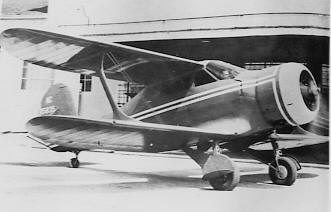
Louise Thaden and & Blanche Noyes flew this Beechcraft
Model C17-R
to victory in the slowest Bendix ever. The aircraft had been promised to
Col. William Brooks of Honduras and was sold to his Government. Walter
Beech pulled it off the line to allow Louise to fly it in the
Bendix. After the
race the Col. appeared looking for his plane. Beech had to prepare
another
in the same color scheme for Louise to fly around the country to
promote
sales of Beechcraft. Many attempts to locate the plane in South America
were
unsuccessful.

Mister Mulligan, the big winner in 1935 was entered in this years Bendix with
Benny's wife Maxine as co-pilot. Maxine wanted to become more familiar with the
airplane as she wanted to try for a woman's speed
record. The pair made their
scheduled stop at Wichita for food and fuel. While over Crown Point New
Mexico,
the propeller shed a blade which caused the plane to crash on a Indian
Reservation. Both Benny and Maxine were trapped in the cockpit.
The engine had come back into the cabin
and rested
on Benny's right foot and Maxine's
left foot. They were also setting in a pool of gasoline. It was hours before
a
young Indian boy came upon the wreckage and went for help. Benny was in bad
shape and the Doctor's feared for his life. The best Doctor's
in the country
were sent to help the pair.
While Benny would loose
his right foot, both recovered.

Amelia
Earhart had flown in many air races prior to the 1936 Bendix. She had only
recently taken delivery of the new Lockheed Electra 10E from Purdue
University as
her "Flying Laboratory" Her co-pilot
for the race was Helen Richey, one of America's
top women pilots. Unexpectedly the emergency cockpit escape
hatch blew open
almost sucking both pilots out,
they were able to secure it with a rag till they landed
at their Kansas City fuel stop where they
were able to wire it closed. The open hatch
caused much lost time. Amelia Earhart was lost on an attempted
round- the-world
flight with
navigator Fred Noonan in the Pacific Ocean near Howland Island in this
ship
on July 5th 1937.
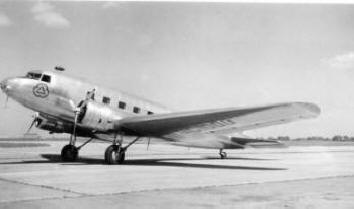
This standard Douglas DC-2 was owned by the Cities Service Gas
and
Oil Company and was piloted by
George Pomeroy and Louis Brewer
with Irving Picker as mechanic. Finished fourth after getting stuck in the
mud at Wichita.
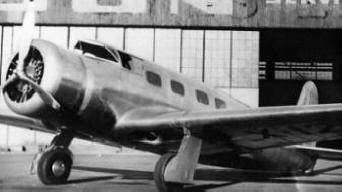
Vultee V1-A Flown by William Gulick and
William Warner with a navigator and
mechanic. Only 25 of this type were built
and the racer was later sold to Spain.
note the photo is not the actual racer but a like
model.
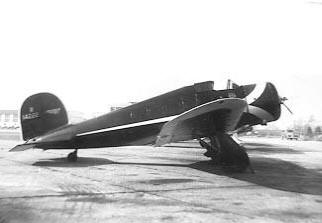
Laura Ingalls flew this Lockheed Orion
9D Special, Race # 53 painted Black
with red numbers. In 1937 aircraft was
sold to Rudolf Wolfe Inc. exported to
Spanish Republican Air Force. It was
involved in the Spanish Civil War and
reported destroyed in a crash.
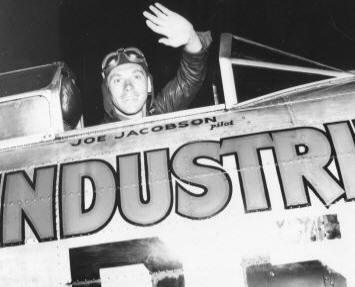
Joe Jacobson took a commercial airliner to New York for the start of the Bendix to fly a
borrowed Northrop Gamma 2-A. Not able to bring his own parachute he was fortunate to
be able to borrow a brand new one. Joe was off and doing quite well flying at 5,000 feet
over Stafford, 50 miles north of Wichita, when the plane exploded. Joe found himself in
mid-air and instinctively pulled the ripcord and landed without serious injury. He appeared
at the races by car having taken a another commercial
airliner to LA. Joe's bad luck did
not end there.
Greve Trophy Race
The 1936 Greve Trophy would for the first time be
one race
with a race-horse start like the Thompson.
| Place | Pilot | Race No | Aircraft | Speed |
| 1 | Michel Detroyat | 100 | Caudron | 247.300 |
| 2 | Harold Neumann | 1 | Folkerts | 225.858 |
| 3 | Art Chester | 3 | Chester Sp. | 224.682 |
| 4 | Rudy King | 70 | Keith Rider | 215.331 |
| 5 | Joe Jacobson | 38 | DGA-4 | 214.426 |
| 6 | Roger Don Rae | 131 | Rider R-1 | 212.325 |
Amelia
Earhart Trophy Race
Woman's A.T.C. Handicap -- 800cu. in. disp.
| Place | Pilot | Race No | Aircraft | Time |
| 1 | Betty Browning | --- | Cessna | 15.58 |
| 2 | Gladys O'Donnell | --- | Ryan | 16.10 |
| 3 | Genevieve Savage | --- | Ryan | 16.27 |
| 4 | Jeannette Lempke | --- | Davis D1-W | 16.30 |
| 5 | Nancy Love | --- | Beechcraft | 16.44 |
Shell Trophy Race
Free-For-All 375 Cubic In. Displacement
| Place | Pilot | Race No | Aircraft | Speed |
| 1 | Harold Neumann | 1 | Folkerts | 231.344 |
| 2 | Art Chester | 3 | Chester Sp. | 230.479 |
| 3 | Joe Jacobson | 37 | Howard | 147.565 |
Thompson Trophy Race
Free-For-All Unlimited
| Place | Pilot | Race No | Aircraft | Speed |
| 1 | Michel Detroyat | 100 | Caudron | 264.261 |
| 2 | Earl Ortman | 4 | Rider R-3 | 248.042 |
| 3 | Roger Don Rae | 70 | Rider R-4 | 236.559 |
| 4 | Harold Neumann | 1 | Folkerts | 233.074 |
| 5 | Marion McKeen | 33 | Brown B-2 | 230.465 |
| 6 | Harry Crosby | 52 | Crosby CR-3 | 226.075 |
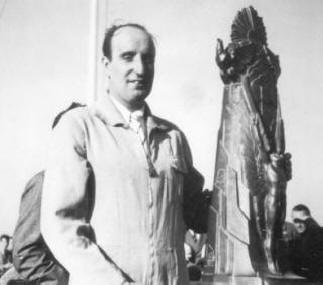
Michel Detroyat the only foreign pilot to win
the Thompson Trophy Race
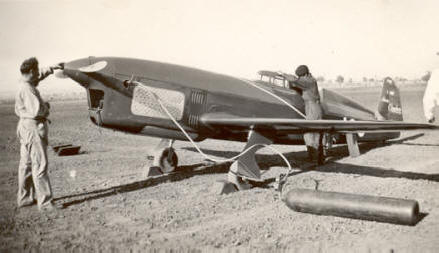
(Bob Likovetz collection)
Michael Detroyat who won both the Greve and the
Thompson Trophy
Race was no stranger to the National Air Races, having
performed
aerobatics at several NAR's. There was a lot of complaining
about
the French sponsored airplane, especially by Roscoe Turner. However
the original deed of gift from Charles E. Thompson invited foreign nations
to enter the competition. 1936 was the first and only year that a foreign
aircraft and pilot were entered in the
Thompson Trophy Race.
France, and especially the Caudron Aircraft Co. had campaigned and
won many races in Europe. The racer was
equipped with a air
operated retractable landing gear system and
a two position air
operated Ratier propeller which gave Detroyat a great advantage.
The aircraft arrived with two engines, a 330 hp. engine for the Greve
Race and a 380 hp engine for the Thompson Trophy Race. After winning
the Greve, a decision was made not to change engines. Michael Detroyat
(sometimes call "Detroit" by Americans) returned to France with some
14,850 American dollars, a large chunk of money for 1936. Color was
overall dark glossy blue with a red/white stripe on fuselage. and white
lettering.

The Keith Rider R-3 piloted by Earl Ortman to second place was originally built for the
1934 MacRobertson Race from London to Melbourne, Australia. A fatal accident while
taxing during early tests kept the racer out. Hal Marcoux of the Douglas Aircraft Co.
purchased the racer and had it completely rebuilt to Douglas standards. This example
of the Keith Rider line featured the only radial engine aircraft in the Thompson race.
Powered by a Pratt Whitney Wasp S1D1 with a newly designed cowl. Color scheme
was yellow with black wings and black numbers.
(Susan Brender's collection)
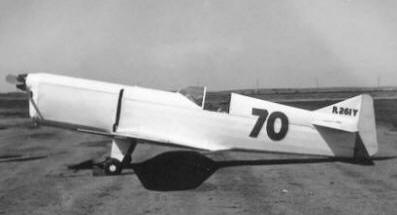
The second and newest Keith Rider design
known as the Rider Special also featured a
cantilever wing with retractable landing gear.
This landing gear however would completely
fit into the lower side of the wing. Power was
supplied by a 6 cylinder Menasco C-6S.
Color scheme was bright yellow with red and
maroon numbers.
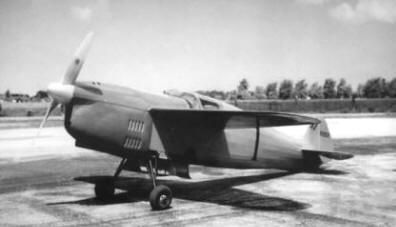
The Folkerts Special Sk-2 "Toots" built for Harold Neumann by Clayton Folkerts carried the race
number 1. Neumann won the Greve and the
Thompson Trophy Race in 1935 in two of Benny
Howard's race planes and figured it was time he had his own. Powered by a 4 cylinder Menasco
C-4S. A hand-cranked retractable landing gear
folded into the fuselage under the pilot's seat.
Lever operated wing flaps were also used. Color was yellow fuselage and brown wings.
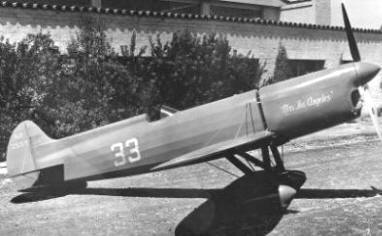
Brown B-2 built for Roy Miner by Lawrence Brown
of L.A. in 1934 named "Miss Los Angeles"
Power plant is a Menasco C-6-S "Buccaneer"
A similar version was built for testing a small
fighter for the United States Army Air Corps. Special attention was given to the
bullet-like
spinner covering the Hamilton Standard hub
and special Story steel 6' 6" metal blades.
Color was maroon with gold lettering.
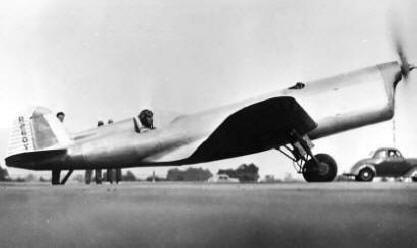
Harry Crosby who was returning home a banana boat from a job flying in
Guatemala
observed many flying fish, Harry had long wanted to build a racer.
The boat was
bucking strong winds and heavy sea's when Harry noticed the flying
fish were not
hampered by the storm. Harry decided to
build a race plane on the shape of the
flying fish. The C6R3
was built with the help of Curtiss-Wright Technical Institute.
Powered by a Menasco 6 cylinder engine the racer was equipped
with a retractable
landing gear and split wing flaps. During the Thompson the racer
was doing well when
the oil breather pipe broke and oil covered the
windshield, Harry had to settle for 6th.
Photo's are from the Hansen collection unless otherwise noted.
 Please send comments to Bill Meixner
Please send comments to Bill Meixner
You are the
th person to pop in on us
since August 30, 2006. Thank You for landing, please go-around and land again later. C A V U
| Updated Tuesday, February 26, 2013 |
